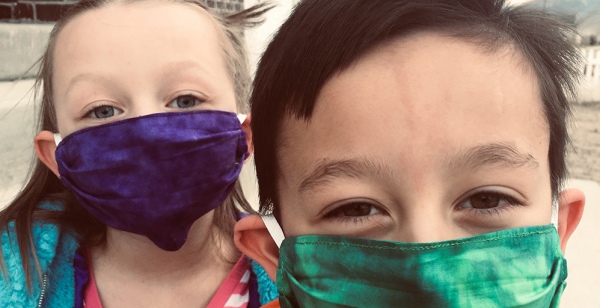Community
Moderna announces COVID vaccine effective and safe for children under 6, evaluating potential booster

CAMBRIDGE, MA / ACCESSWIRE / March 23, 2022 / Moderna, Inc. today announced positive interim data from the Phase 2/3 KidCOVE study of the Moderna COVID-19 vaccine (mRNA-1273) in children 6 months to under 2 years and 2 years to under 6 years of age. This interim analysis showed a robust neutralizing antibody response in both age groups after a 25 µg two-dose primary series of mRNA-1273 along with a favorable safety profile. Based on these data, Moderna will submit a request for authorization of a 25 μg two-dose primary series of mRNA-1273 for children 6 months to under 6 years of age to the U.S. Food and Drug Administration, European Medicines Agency (EMA) and other global regulators in the coming weeks.
“We believe these latest results from the KidCOVE study are good news for parents of children under 6 years of age. We now have clinical data on the performance of our vaccine from infants six months of age through older adults,” said Stéphane Bancel, Chief Executive Officer of Moderna. “Given the need for a vaccine against COVID-19 in infants and young children we are working with the U.S. FDA and regulators globally to submit these data as soon as possible. Additionally, after consultation with the U.S. FDA we have initiated a submission for emergency use authorization of our COVID-19 vaccine in children ages 6 to 11 years old and are updating our submission to the FDA for emergency use authorization of mRNA-1273 in adolescents ages 12 to 17 years with additional follow-up data. We remain committed to helping to end the COVID-19 pandemic with a vaccine for children of all ages.”
KidCOVE is a randomized, observer-blind, placebo-controlled study to evaluate the safety, tolerability, and immunogenicity of two doses of mRNA-1273 given to healthy children 28 days apart. The study population is divided into three age groups (6 to <12 years, 2 to <6 years, and 6 months to <2 years). In the study, efficacy could be evaluated if enough cases accrued. Overall, the Company has enrolled approximately 11,700 pediatric participants in the U.S. and Canada into the trial including approximately 4,200 children ages 2 to under 6 years and approximately 2,500 children ages 6 months to under 2 years. Today, Moderna is reporting on the 6 months to under 2 years and 2 years to under 6 years age groups. Approximately 6,700 participants 6 months to under 6 years of age were enrolled into this age cohort. In both age groups, the tolerability profile was generally consistent with that observed in children age 6 to under 12, in adolescents age 12 to 17, and in adults. The majority of adverse events were mild or moderate and were more frequently reported after dose two. Rates of fever greater than 38°C among vaccine recipients were consistent with other commonly used and recommended pediatric vaccines and were 17.0% and 14.6% in the 6 months to under two years and the two to under six years age groups, compared to 23.9% in the six to under 12 years age group, which received a 50 µg two-dose primary series. Fever greater than 40°C was seen in only a few children (0.2% in each age group). No study pause rules were met, and no new safety concerns were identified in either age group. No deaths, no myocarditis or pericarditis, and no multisystem inflammatory syndrome in children (MIS-C) were reported In both age groups, two doses of 25 µg provided similar immunogenicity to the 100 µg two-dose primary series in adults ages 18 to 25 years, meeting the non-inferiority criteria and immunobridging, and indicating that the benefit of mRNA-1273 conferred to adults ages 18 to 25 are also conferred to children and infants as young as 6 months. SARS-Cov-2-neutralizing antibody geometric mean ratio (GMR) comparing the response in children 6 months to under 2 years to the response in young adults from the Phase 3 COVE study was 1.3 (95% Cl: 1.1, 1.5) and was 1.0 (95% Cl: 0.9, 1.2) for the 2 to under 6 years age group. This also predicts protection from COVID-19 and severe COVID-19 disease down to 6 months of age. The Omicron SARS-CoV-2 variant predominated in the U.S. during the KidCOVE study in these younger age groups. When it comes to infection with the vaccine, Moderna says the majority of cases were mild, and no severe COVID-19 disease was observed in either age group. Similar to adults, Moderna is preparing to evaluate the potential of a booster dose for all pediatric populations, including those age 6 months to under 6 years, 6 to under 12 years, and adolescents. The Company is evaluating booster doses of mRNA-1273 and its bivalent booster candidate (mRNA-1273.214), which includes Omicron variant booster and mRNA-1273. The KidCOVE study is being conducted in collaboration with the National Institute of Allergy and Infectious Diseases (NIAID), part of the National Institutes of Health (NIH) and the Biomedical Advanced Research and Development Authority (BARDA), part of the Office of the Assistant Secretary for Preparedness and Response at the U.S. Department of Health and Human Services. The ClinicalTrials.gov identifier is NCT04796896. BARDA, part of ASPR within the U.S. HHS is supporting the continued research and development of the Company's COVID-19 vaccine development efforts with federal funding under contract no. 75A50120C00034. BARDA is reimbursing Moderna for 100 percent of the allowable costs incurred by the Company for conducting the program described in the BARDA contract. The U.S. government has agreed to purchase supply of mRNA-1273 under U.S. Department of Defense contract no. W911QY-20-C-0100.





david
March 23, 2022 at 11:07 pm
It is stunning that there are parents who are so ignorant and foolish to allow their child to be injected with this poisonous load of toxic nano-particle encapsulated spike protein that has clinically proven endolithic micro-clotting tendencies in all major organs